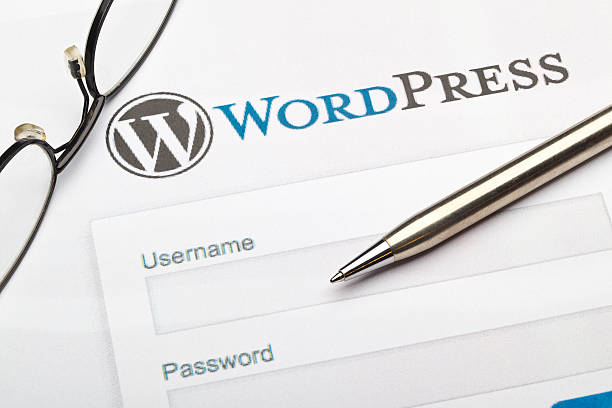09 WordPress Maintenance Tasks To Keep Your Site Updated

By
Every single thing in our life needs maintenance, whether it is electronics in our house or our bodies. Without maintenance, nothing will work the way you expect. When we talk about maintenance, your WordPress website is no exception. No matter how big or small your business site is, without maintenance, it will not only become prone to security issues but also redundant if you keep neglecting it.
Most business owners perceive that launching a website is just a one-time effort and it will function seamlessly for many years. It is not true, in reality, every website needs comprehensive maintenance to function properly, stay updated with the latest technologies, and shield itself against increasing online threats.
It might seem huge but most WordPress maintenance tasks can be automated and achieved with minimal effort. In this post, we have rounded up major WordPress maintenance tasks to keep your site updated, running smoothly, and maintained in top shape without paying a single penny for the maintenance services.
It is time to take your site’s maintenance task into your own hands!
Ready? Let’s get rolling!
09 Top WordPress Maintenance Tasks That Can Be Done Easily
WordPress website maintenance is continuous as creating and launching a site cannot be done once and forgotten for months. If you don’t maintain your site, visitors will have a hard time navigating it and might run into downtime or other problems. If this happens recurrently, you can lose thousands of visitors and of course, your chance of earning more customers which will adversely affect your conversion rate.
Basic maintenance can improve your site’s performance and enhance user experience significantly while preventing security threats. Moreover, professional WordPress maintenance services are not cheap.
Therefore, if you want to avoid this considerable expenditure for your business and upkeep your site yourself with basic WordPress maintenance tasks, here is the checklist that will help you achieve this goal.
1. Regular Backups
Running regular backups is one of the vital site’s maintenance tasks. Performing a complete backup greatly helps you in situations when you need to restore the former data quickly without a hassle.
Circumstances leading to hacks or website-breaking issues can put your business at a big loss. However, if you have your data stored somewhere, you can simply go for a complete restore rather than putting huge efforts into troubleshooting.
You need to back up your website data regularly by simply copying the database files and the site’s data to another location. If want to avoid doing this procedure manually, you can use web hosting tools or backup plugins to automate the entire process
2. Themes, Plugins, and Core Updation
Your site’s plugins, themes, and core software are some of the major causes that lead to security issues and other errors. Therefore, you need to keep them in check if you want your WordPress site to function properly without any errors while preventing threats. If you keep your site’s core software, themes, and plugins updated, you can maintain it pretty easily.
Updating these components of a site is very simple. You just need to visit the WordPress dashboard and click the ‘Updates’ button, and the job is done. For themes, consider updating only that which you are using currently. This whole process takes a couple of seconds.
In this step, you can also disable plugins and themes which you are not using. This will help you improve the performance and security of your site. Consider backing up your data before performing multiple plugin updates on your site.
3. Speed Optimization
A website should load swiftly to improve user experience. However, the addition of new features, plugins, customizing design, etc. can make your site slow. This happens because you add more data to your webpages and it takes time to load.
Slow websites are penalized by search engines and often pushed back in the SERPs (search engine result pages). This is because search engines want to provide quick answers to their users and if your site helps them do it, they will favor you and vice-versa. So, you need to optimize the speed of your site. You can also utilize several tools to monitor your website speed and make changes accordingly.
4. Strengthen Security
Although WordPress is a secured content management system, you should further strengthen your site security to safeguard your and your user’s sensitive data. Even if your site does not store user personal data, hackers can spread malware or spam easily. The more steps you take towards securing your site, the more maintained it will be.
To avoid site hacking or penetration of malware or viruses, you should keep your site themes and plugins updated to the current versions. Updates of software come with the latest security patches that protect the site from online attacks. You can also force users to utilize strong passwords to protect their information.
Plus, you can use two-factor authentication along with strong passwords that are unbreachable. Adding CAPTCHAs to a site’s forms can help you spend less time curbing spam or paying hefty charges for malware removal.
5. Checking and Fixing Broken Links
Broken links on your website lead to unexpected problems. If your visitors find broken links on your site’s content, they will perceive that it is outdated or you are not active enough to check such errors. This doesn’t go well on your reputation and your conversion rate as broken links adversely affect your search engine rankings.
Broken links not only increase your bounce rate but also hurt your SEO. You should thoroughly check all the external and internal links on your web pages. This task is huge if done manually, so you can utilize a reliable plugin to do this automatically. Every link that you have used in your site should be working properly, especially those that are pointing to another page.
6. Mobile Responsiveness
Most people use their mobile devices to browse the internet or find answers to a specific query. This means most viewers of your site are mobile users. Your website should work seamlessly across all devices. If you have already taken care of this part, you need to take time to check whether your site is functioning properly on the phone screens or not.
Checking the functionality and design aspects of your whole website on different mobile screens is a good start. However, you should follow this practice every few months. This will help you detect errors and rectify them before you lose any leads.
7. Database Optimization
Database optimization helps you increase the speed of your website. This process is all about getting rid of unused rows and tables in the database. Many plugins in your website leave blank entries in your database after deleting them. These orphaned entries can slow down queries in the database which impacts your website speed.
If you want to delete these entries safely, you should consider backing up the website data first. You can optimize the data of your site both manually as well as using the tool. It is up to you whether you want to do it on your own or automate the entire optimization process.
8. Testing Forms
Forms in your website are one of the most crucial elements that help you gain more leads for your business, especially if you are running an e-commerce store. Being one of the most interactive attributes of website design, if it stops working properly, you will fail to fetch new leads, visitors’ requests for support, and much more. Therefore, you should test forms periodically without fail.
In most forms, when they are filled you get notified after a submission via email or a success message. If you have stopped getting messages or emails for new form submissions, it indicates that they are not working. Consider testing such critical forms once or twice every month.
9. Getting Rid of Unused Plugins and Themes
While updating themes and plugins of your WordPress site, if you find any that you are not using; it is time to get rid of them. Deleting unused themes and plugins helps you make more room in your site and remove redundant entries from the database. This makes your site’s maintenance even more smoother and easier.
If your website has multiple plugins, you need to review each on your list. Keep those that you are using currently and get rid of them that you haven’t used for a while. Also, updating the website accumulates multiple plugins, so keep checking it. Consider following this practice in 2-3 months.
The Closure
The way compelling content and impeccable marketing strategies are considered crucial for business success, a website and its maintenance play a key role in gaining more leads. WordPress maintenance might be overlooked by many site owners but it holds a lot of importance.
You don’t need professional expertise in the upkeep of your business site. You are required to spare some time and put a little effort into performing these WordPress maintenance tasks.
Now you know what aspects make your site fully maintained, if you have more questions regarding your WordPress site maintenance, feel free to post your comment below.
Upma is the SEO Executive at JoomDev. She is passionate about turning ideas into reality and helping businesses grow. With her experience in WordPress website maintenance, she can ensure the success of any project.
sooperarticles.com







No Comment